Complete Solutions to PHYSICS of chapter RAY OPTICS AND OPTICAL INSTRUMNTS of Class 11 book with complete answers and questions
| Class 11 | PHYSICS |
| Chapter | RAY OPTICS AND OPTICAL INSTRUMNTS |
| DISHA | PHYSICS |
| Number Of Questions | 44 |
| Academic Year | 2023-24 |
The refracting angle of a prism is `A` and refractive index of the material of the prism is `cos(A//2)`. The angle of minimum deviation is
View SolutionIf two lenses of `+5` dioptres are mounted at some distance apart, the equivalent power will always be negative if the distance is
View SolutionFig. (a) and (b) show refraction of an incident ray in air at `60^@` with the normal to a glass-air and water-air interface respectively. Predict the angle of refraction of an incident ray in water at `45^@` with the normal to a water glass interface. Take `.^a mu_g = 1.32`.
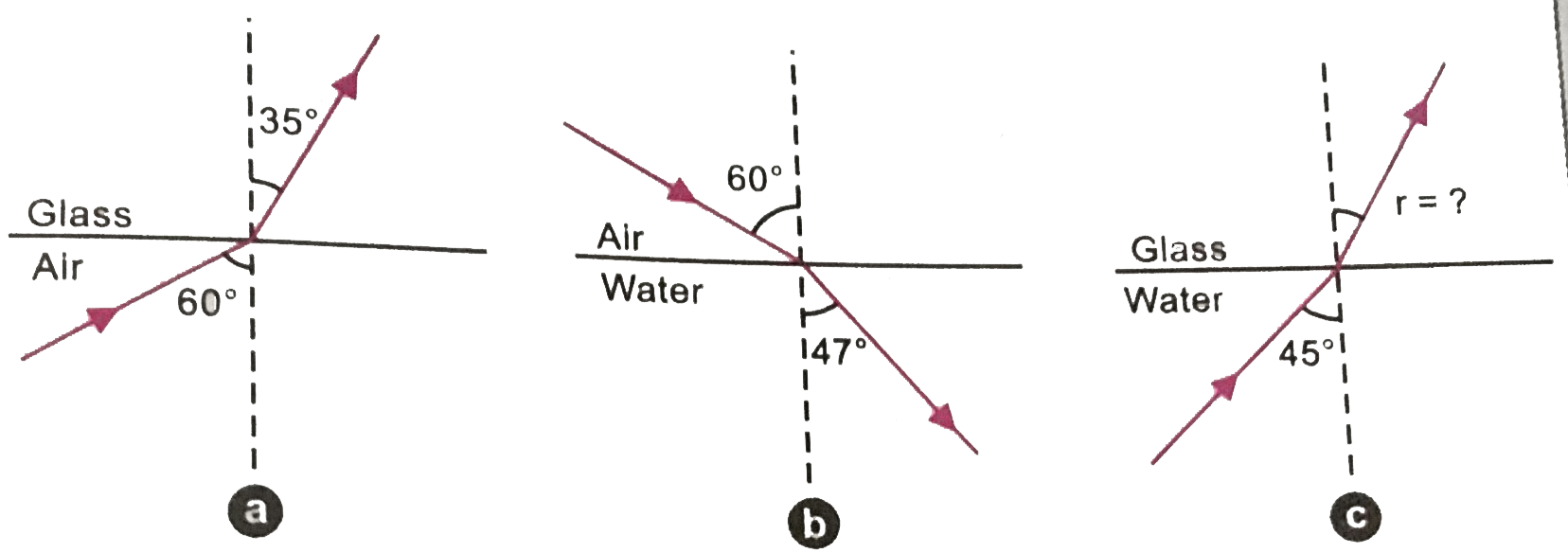 .
.
View SolutionA fish looking up through the water sees the outside world contained in a circular horizon. If the refractive index of water is `(4)/(3)` and the fish is 12 cm below the surface, the radius of this circle is cm is
View SolutionLet `f_(v)` and `f_(r)` are the focal lengths of a convex lens for violet and red lights respectively. If `F_(v)` and `F_(r)` are the focal lengths of a concave lens for violet and red light respectively, then
View SolutionSpherical aberration in a lens
View SolutionA rod of length 10 cm lies along the principal axis of a concave mirror of focal length 10 cm in such a way that the end closer to the pole is 20 cm away from it. Find the length of the image.
View SolutionA telescope consists of two lenses of focal lengths `0.3 m and 3 cm` respectively. It is fucussed on moon which subtends an angle of `0.5^@` at the obejctive. Calculate the angle subtended at the eye by the final image in normal adjustment of the telescope.
View SolutionThe layered lens as shown is made of two types of transparent materials-one indicated by horizontal lines and the other by vertical lines. The number of images formed of an object will be

View SolutionA person's near point is `50 cm` and his far point `3m`. Power of the lenses he requires for
`(i)` reading and
`(ii)` for seeing distant stars are
View SolutionA ray of light falls on a transparent glass slab of refractive index `1.62`. If the reflected ray and the refracted rays are mutually perpendicular, what is the angle of refraction ?
View SolutionA telescope has an objective of focal length 100 cm and an eyepiece of focal length 5 cm. What is the magnifying power of the telescope when the final image is formed at the least distance of distinct vision ?
View SolutionWhich light rays undergoes two internal reflection inside a raindrop, which of the rainbow is formed?
View SolutionWhen a plane mirror is placed horizontally on level ground at a distance of 60 m from the foot of a tower, the top of the tower and its image in the mirror subtend and angle of `90^@` at the eye. The height of the tower is
View SolutionA parallel beam of light is incident on the surface of a transparent hemisphere of radius R and refractive index 2.0 as shown in figure. The position of the image formed by refraction at the first surface is :
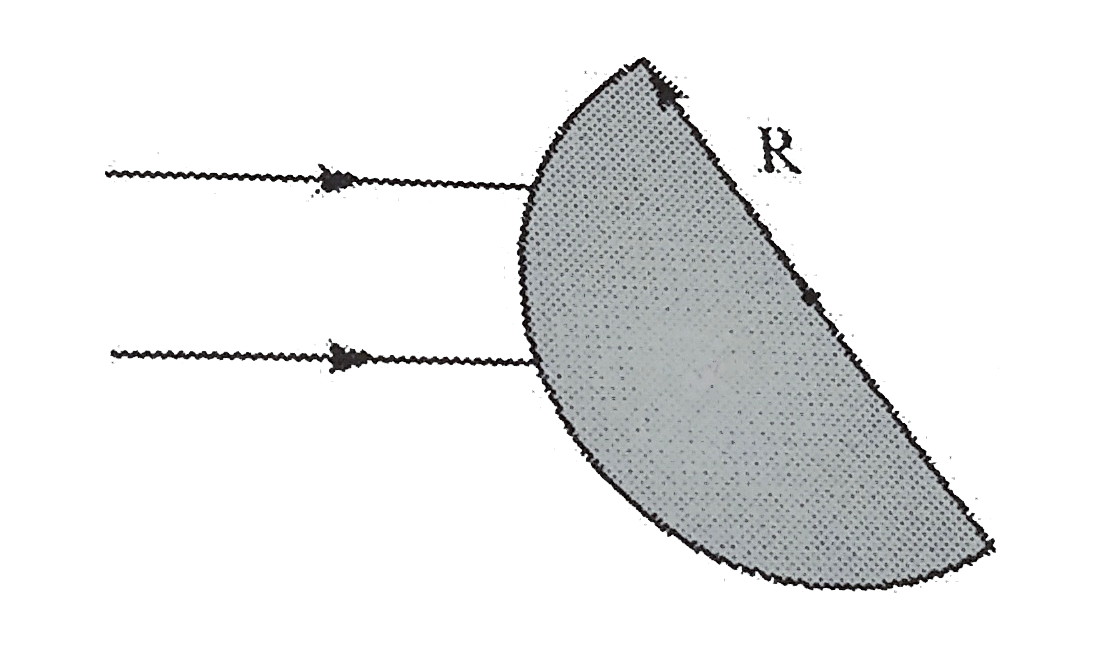
View SolutionA lens made of glass whose index of refraction is 1.60 has a focal length of + 20 cm in air. Its focal length in water, whose refractive index is 1.33, will be
View SolutionA compound microscope has an eye piece of focal length `10 cm` and an objective of focal length `4 cm`. Calculate the magnifcation, if an object is kept at a distance of `5 cm` from the objective so that final image is formed at the least distance vision `(20 cm)`
View SolutionFor a prism kept in air, it is found that for an angle of incidence `60^(@)`, the angle of refraction A, angle of deviation `delta` and anble of emergence e become equal. Then, the refractive index of the prism is
View SolutionA person can see clearly only upto a distance of `25 cm`. He wants to read a book placed at a distance of `50cm`. What kind of lens does he require for his spectacles and what must be its power ?
View SolutionAn object is placed at a distance of 40 cm in front of a concave mirror of focal length 20 cm. The image produced is
View SolutionA vessel of depth d is half filled with a liquid of refractive index `mu_1` and the other half is filled with a liquid of refractive index `mu_2`. The apparent depth of the vessel, when looked at normally, is
View SolutionThe following figure shows refraction of light at the interface of three media Correct the order of optical density (d) of the media is
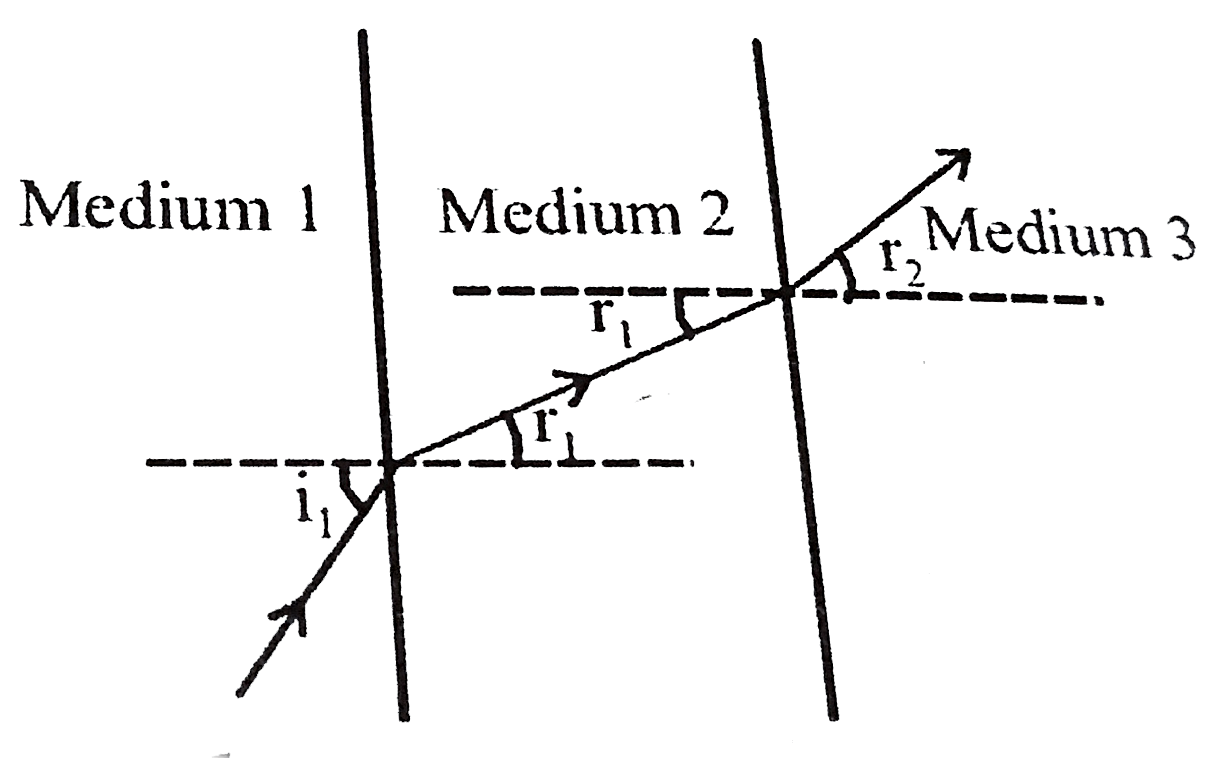
View SolutionLight travels in two media A and B with speeds `1.8 × 10^(8) m s^(–1) and2.4 × 10^(8) m s^(–1)` respectively. Then the critical angle between them is
View SolutionThe refractive index of a glass is 1.520 for red light and 1.525 for blue light. Let `D_1` and `D_2` be angles of minimum deviation for red and blue light respectively in a prism of this glass. Then,
View SolutionWhich of the following is not due to total internal reflection ?
View SolutionA body is located on a wall. Its image of equal size is to be obtained on a parallel wall with the help of a convex leng. The lens is placed at a distance d ahead of second wall, then the required focal length will be:
View SolutionA concave mirror forms the image of an object on a screen. If the lower half of the mirror is covered with an opaque card, the effect would be
View SolutionA ray of light passes through an equilateral prism (refractive index `1.5`) such that angle of incidence is equal to angle of emergence and the latter is equal to `3//4 th` of the angle of prism. Calculate the angle of deviation.
View SolutionThe power of a biconvex lens is 10 dioptre and the radius of curvature of each surface is 10 cm. Then the refractive index of the material of the lens is
View SolutionA microscope is focused on a mark on a piece of paper and then a slab of glass of thickness `3cm` and refractive index `1.5` is placed over the mark. How should the microscope be moved to get the mark in focus again ?
View SolutionWhat causes chromatic aberration?
View SolutionThe graph between angle of deviation `(delta)` and angle of incidence (i) for a triangular prism is represented by
View SolutionThe ratio of thickness of plates of two transparent medium A and B is 6 : 4. If light takes equal time in passing through them, then refractive index of A with respect to B will be
View SolutionA rectangular block of glass is placed on a mark made on the surface of the table and it is viewed from the vertical position of eye. If refractive index of glass be ` mu` and its thickness d, then the mark will appear to be raised up by
View SolutionIf a glass prism is dipped in water, its dispersive power
View SolutionIn the given figure a plano-concave lens is placed on a paper on which a flower is drawn. How far above its actual position does the flower appear to be ?
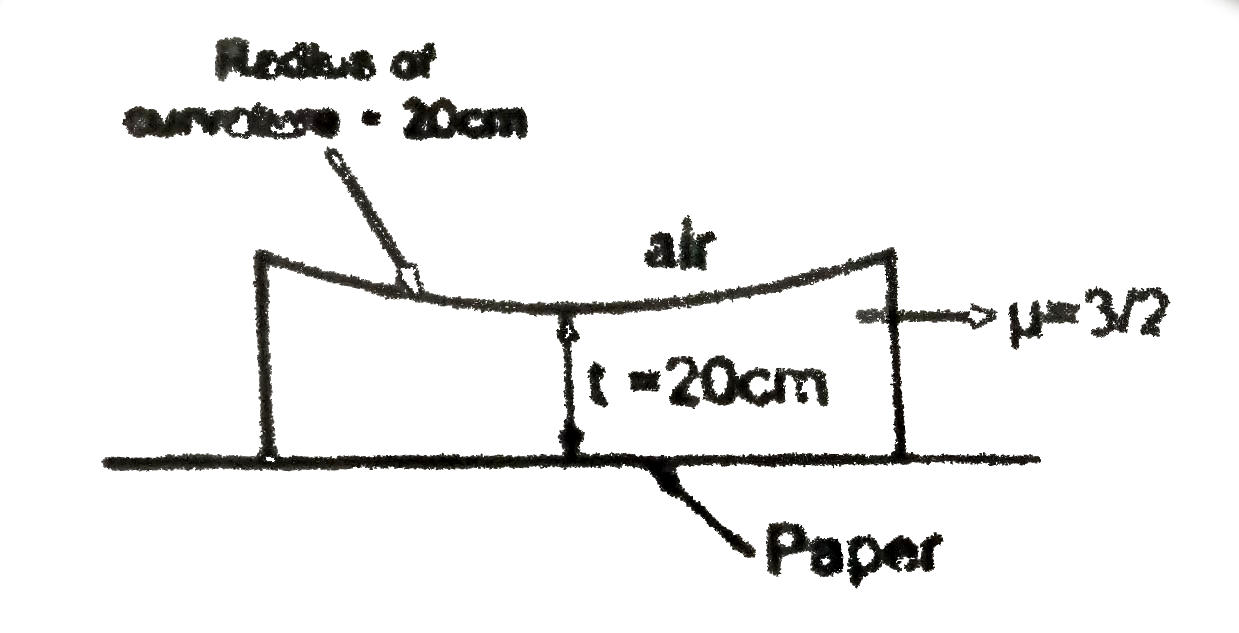
View SolutionTo get three images of a single object, one should have two plane mirrors at an angle of
View SolutionLight propagates with speed of `2.2 xx 10^( 8) m//s` and m/s `2.4 xx10 ^(8)´ in the media P and Q respectively. The critical angle of incidence for light undergoing reflection from P and Q is
View SolutionA thin convergent glass lens `(mu_g=1.5)` has a power of `+5.0D.` When this lens is immersed in a liquid of refractive index `mu_1,` it acts as a divergent lens of focal length `100 cm.` The value of `mu_1` is
View SolutionA ray of light travelling inside a rectangular glass block of refractive index`sqrt 2 `is incident on the glass-air surface at an angle of incidence of `45^(@)`. The refractive index of air is one. Under these conditions the ray will
View SolutionA small coin is resting on the bottom of a beaker filled with a liquid. A ray of light from the coin travels up to the surface of the liquid and moves along its surface (see figure ).
How fast is the light travelling in the liquid ?
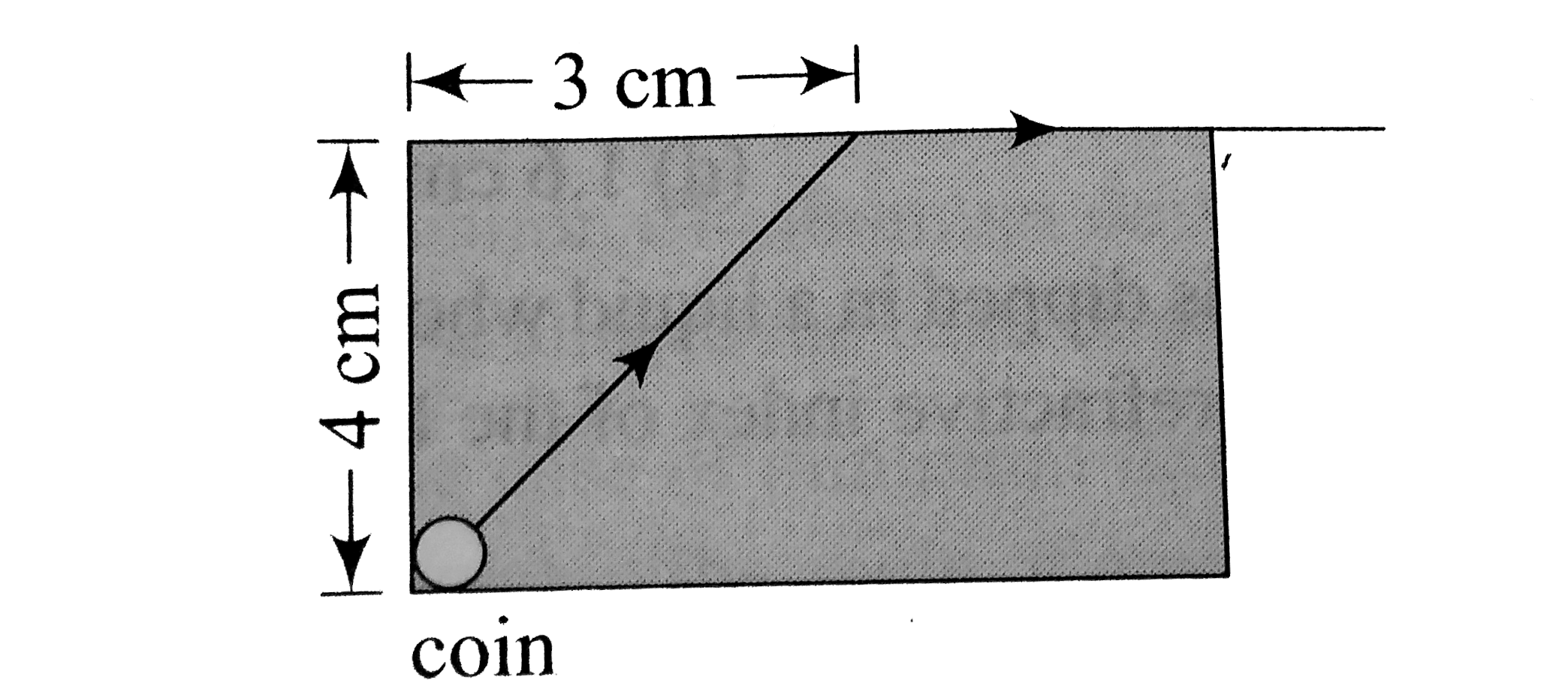
View SolutionA ray PQ incident on the refracting face BA is refracted in the prism BAC as shown in the figure and emerges from the other refracting face AC as RS such that AQ = AR. If the angle of prism `A = 60^(@)` and the refractive index of the meterial of prism is `sqrt2` , then the angle of deviation of the ray is
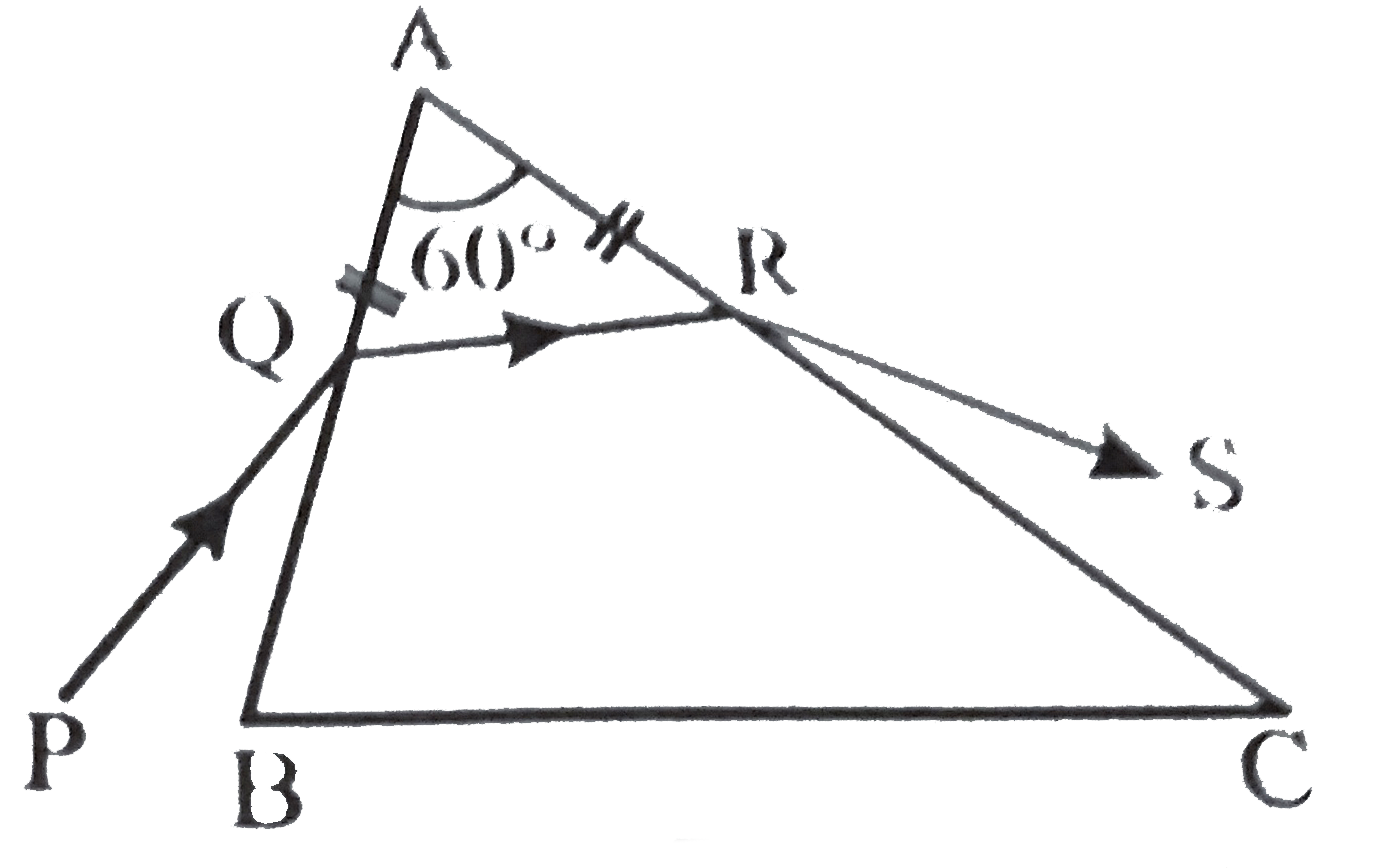
View SolutionWhen a biconvex lens of glass having refractive index `1.47` is dipped in a liquid, it acts as a plane sheet of glass. This implies that the liquid must have refractive index.
View SolutionShow that the angle of deviation produced by a thin prism is reduced to one fourth (w.r.t. air) when it is immersed in water. Given `.^a mu_g = 3//2` and `.^a mu_g = 4//3`.
View Solution
PHYSICS questions and complete solutions for chapter RAY OPTICS AND OPTICAL INSTRUMNTS of DISHA PHYSICS (HINGLISH) of Class 11